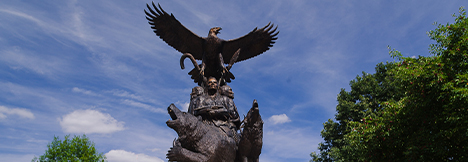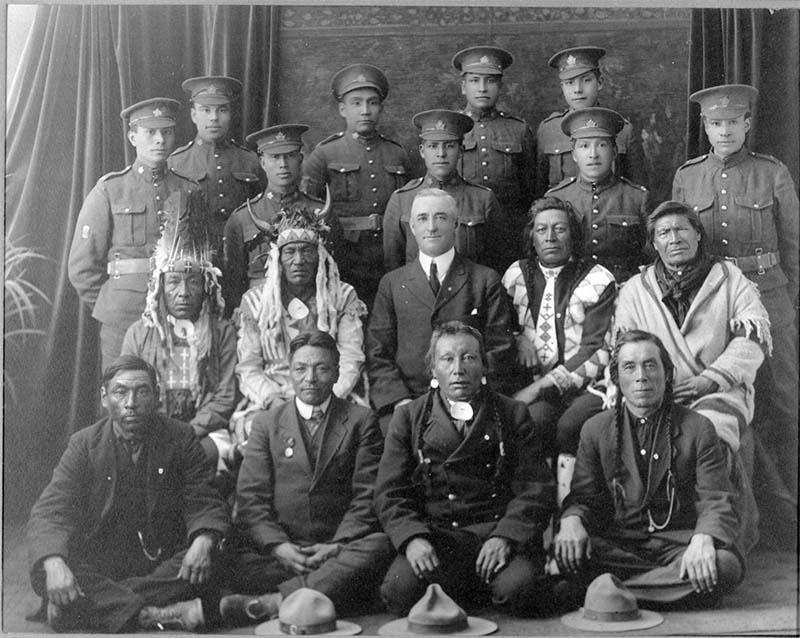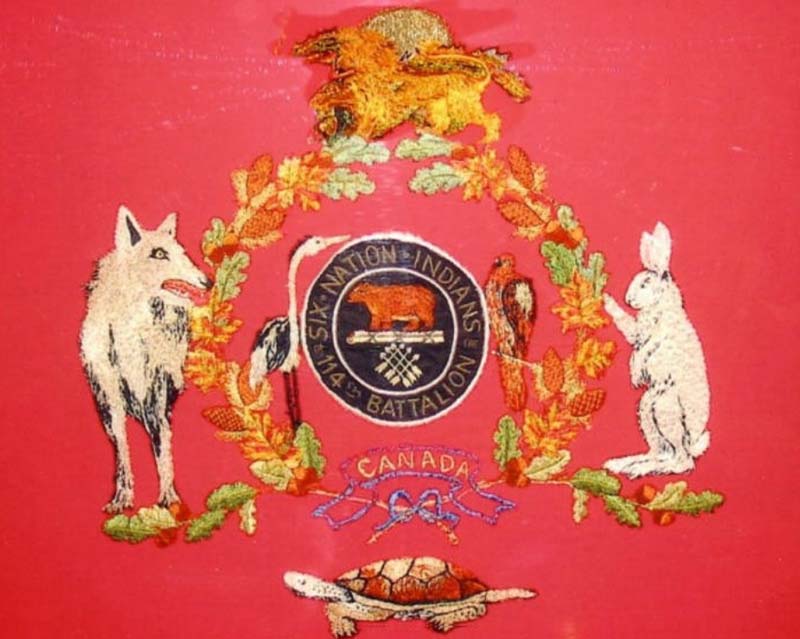Aboriginal Military Service in the First World War National Historic Event

© Norman Maddeaux
The Aboriginal military service in the First World War was designated as a national historic event in 2011.
Historical importance: first time the Canadian forces integrated a substantial number of Indigenous men into their ranks as individual soldiers.
Commemorative plaque: no plaque installedFootnote 1
Aboriginal Military Service in the First World War
During the Great War, Aboriginal people from across the country served throughout the Canadian military. They were among the first to enlist and volunteered in significant numbers, even though for many this meant fighting and dying for a country in which they were denied the right to vote. They served side by side with other Canadians, their abilities gaining them acceptance and respect that contradicted racist sentiments back home. As veterans, they worked to improve the position of Aboriginal peoples, and were an active force behind the League of Indians of Canada, the first organization to give a national voice to their communities.
Aboriginal Military Service in the First World War

© Library and Archives Canada / PA-066815
Between 1914 and 1918, Aboriginal men from all regions of Canada and the Dominion of Newfoundland fought with the Canadian military in the First World War. These men volunteered to serve, even though for many this meant fighting for a government that considered them “wards” of the state and denied their right to vote. Serving side-by-side with other Canadian men, Aboriginal soldiers gained acceptance and respect at levels that contradicted their treatment and status back home, and challenged the racist sentiment that one could not be both Aboriginal and a responsible citizen. At war’s end, Aboriginal veterans and members of Aboriginal communities were inspired to improve the status of Aboriginal peoples in Canada. This was the active force behind the first pan-Canadian Aboriginal organization, the League of Indians of Canada, which gave a national voice to Aboriginal grievances and set the stage for future activism in the fight for Aboriginal rights.
When war broke out, Aboriginal men were among the first to enlist for the Canadian Expeditionary Force (CEF) and were part of the first contingent of Canadians to be sent overseas. During the war, the number of Aboriginal men that volunteered left some reserves nearly depleted of young men. Aboriginal women were also active participants, and raised money, formed committees, and sent comforts from home to the troops at the front. While many Aboriginal men were eager to enlist, not all shared this enthusiasm and some Aboriginal communities discouraged their young men from signing up.

© University of Calgary
Once overseas, Aboriginal men served throughout the army in the infantry, railway troops, forestry, pioneer, and labour battalions, the veterinary corps, and even the Royal Flying Corps. Some Aboriginal men were praised for their skills as snipers and scouts, using abilities they had acquired through their civilian roles as hunters and trappers, and Aboriginal men won medals for bravery and honour throughout the CEF. More than 300 Aboriginal men were killed at war, and many others were wounded or died upon their return.
Many Aboriginal veterans felt that little distinction existed between Aboriginal and non-Aboriginal soldiers on the front. Upon their demobilization, however, veterans returned to the same discriminatory environment that had existed prior to the war, and many felt that their status in society did not reflect their wartime achievement and sacrifice. Military service had provided an opportunity for Aboriginal soldiers from different parts of the country to meet and exchange ideas, and this created a sense of shared experience. The League of Indians of Canada was founded in 1919 by a veteran of the war and attracted members from across Canada to lobby for Aboriginal rights until its demise in the 1920s.
Backgrounder last update: 2016-12-15
The National Program of Historical Commemoration relies on the participation of Canadians in the identification of places, events and persons of national historic significance. Any member of the public can nominate a topic for consideration by the Historic Sites and Monuments Board of Canada.
Related links
- Date modified :